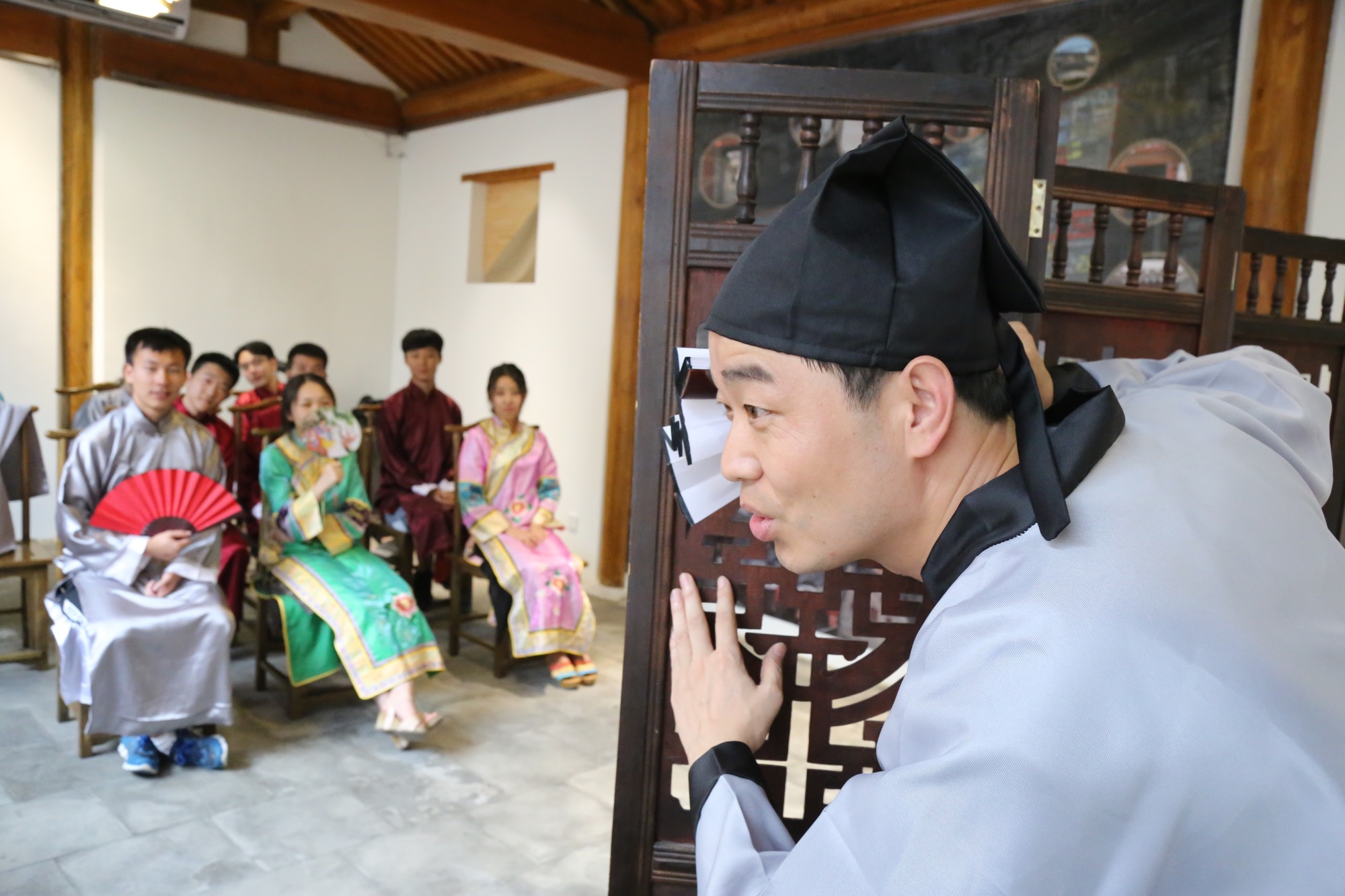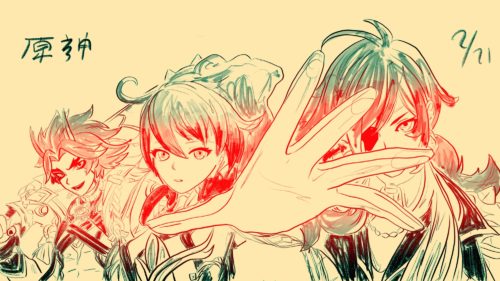From ‘Wolf Warrior’ to an actual wolf: The work of Haiyang, a Chinese mouth acrobat
A 20-year journey to becoming a disciple of kouji, "mouth acrobatics."

“Cock-a-doodle-doo!” crowed Haiyang.
It was 1993 on the outskirts of Luoyang, Henan province. As a mischievous 14-year-old boy, Haiyang 海洋 — who at the time was still going by his real name, Jiang Lianying 江联营 — would often amuse himself by fooling his fellow villagers in ways involving sound; at dusk, he would let out a few rooster cries, waking everyone early; at night, unsuspecting villagers would jump in excitement upon hearing the familiar bellowing of the village knife-sharpener (whose non-local accent was familiar to the whole village), only to be met by their neighbor on the opposite side of the road, also carrying a pile of blunt kitchen knives, equally puzzled at the sudden disappearance of the peddler.
This was the beginning of Haiyang’s 20-year journey to becoming a disciple of kouji (口技), or “mouth acrobatics,” a traditional Chinese performing art that has been passed from master to student for more than 2,000 years. But this unbroken line has, for the most part of Chinese history, remained rather narrow; talent is only a small fraction of the formula to becoming a kouji master, of which there is currently only one — Niu Yuliang 牛玉亮.
“Anyone can produce these sounds,” Haiyang states matter-of-factly, proving his point by teaching me his wolf howl, which I botch. He then tries to teach me the signature bird chirrup that earned kouji masters imperial patronage during the Song Dynasty. After observing me squeak for a few seconds, he changes his original statement:
“Not anyone can do this, only those who endure the years of practice.”
For most mainland Chinese, the word “kouji” conjures up a vague recollection of an eponymous ancient Chinese text they studied during middle school, describing a Song Dynasty kouji performance. Haiyang knows it well, having performed it many times — the kouji master, equipped with a fan, wooden block, and his vocal jukebox, stands behind an opaque screen and enthralls the imagination of the audience sitting in front of the screen, usually with closed eyes. The kouji master will single-handedly play all the characters in the story and reproduce almost all of the sounds in their environment; only wing-flapping and wood-knocking lie outside the range of the kouji master’s vocal chords.
But with the appearance of TV, kouji masters removed the screen and became bona fide actors, mixing vocal mimicry with Chinese crosstalk (相声 xiàngsheng) and Mr. Bean-level facial expressions. Luosang Studies Art (洛桑学艺 luòsāng xué yì), an acclaimed show that ran from 1993 until late 1995 on China Central Television (CCTV), was the epitome of this TV-friendly genre of kouji. In it, Sichuan-born Tibetan kouji prodigy Luosang Nima 洛桑尼玛 teamed up with crosstalk master Yin Bolin 尹博林, with Luosang playing a dimwitted student and Yin his heavy-handed teacher. Sadly, the show came to an abrupt end after Luosang died in a car crash in 1995.
But while China’s entertainment circles mourned Luosang’s death, 14-year-old Haiyang saw a chance to become the next kouji star. At the time, he already considered his skills as being equal to that of Luosang — all he needed to do was find Yin Bolin in Beijing. Such a task would be hard enough in today’s internet age, but back in the early ’90s, finding someone’s phone number, let alone exact location, was nearly impossible. After flicking through dictionary-sized Beijing yellow pages and still not finding Yin, Haiyang decided to take the long route and bide his time.
His big break came after more than two decades of failed auditions, sabotaged opportunities, and occasional bribes. Once he was taken under the wing of Niu Yuliang (after spending a year looking for him, two currying his favor), Haiyang began to slowly appear on stage, first as a disciple of Niu, then as a performer in his own right, on the CCTV channels Luosang had built his fame on.
Haiyang also began to carve out new markets and audiences for kouji. First, the movie industry in 2017: many of the tank blasts and missile explosions in Wolf Warrior 2 (the highest-grossing Chinese film ever released) came out of Haiyang’s mouth. The following year, the U.S.: Haiyang was a main act in the Chinese embassy’s Lunar New Year party, finding himself in a picture with the main guest of honor, Ivanka Trump.
Since his return to China, Haiyang has been on a hectic schedule, trying to juggle TV show appearances with his duties as a kouji disciple, which mainly revolve around finding a new crop of students willing to dedicate their lives to the art.
Nevertheless, Haiyang was happy to perform for The China Project a few samples of his constantly evolving repertoire; some include sounds he used in Wolf Warrior, others are ancient Chinese instruments never mimicked by a human mouth. Before we met up with him, Haiyang had performed to a group of angsty international school millennials who played on their phone for most of his performance — until the kouji master’s decibel-scale-breaking, train-huffing imitation brought everyone to attention.
“A kouji master must be grateful above all else,” Haiyang explains. “To the nature from where he draws inspiration, to the machines human produce, kouji reflects and celebrates life just as it is.”
The above video shows a traditional kouji performance. Here’s Haiyang with a modern rendition. Enjoy.





